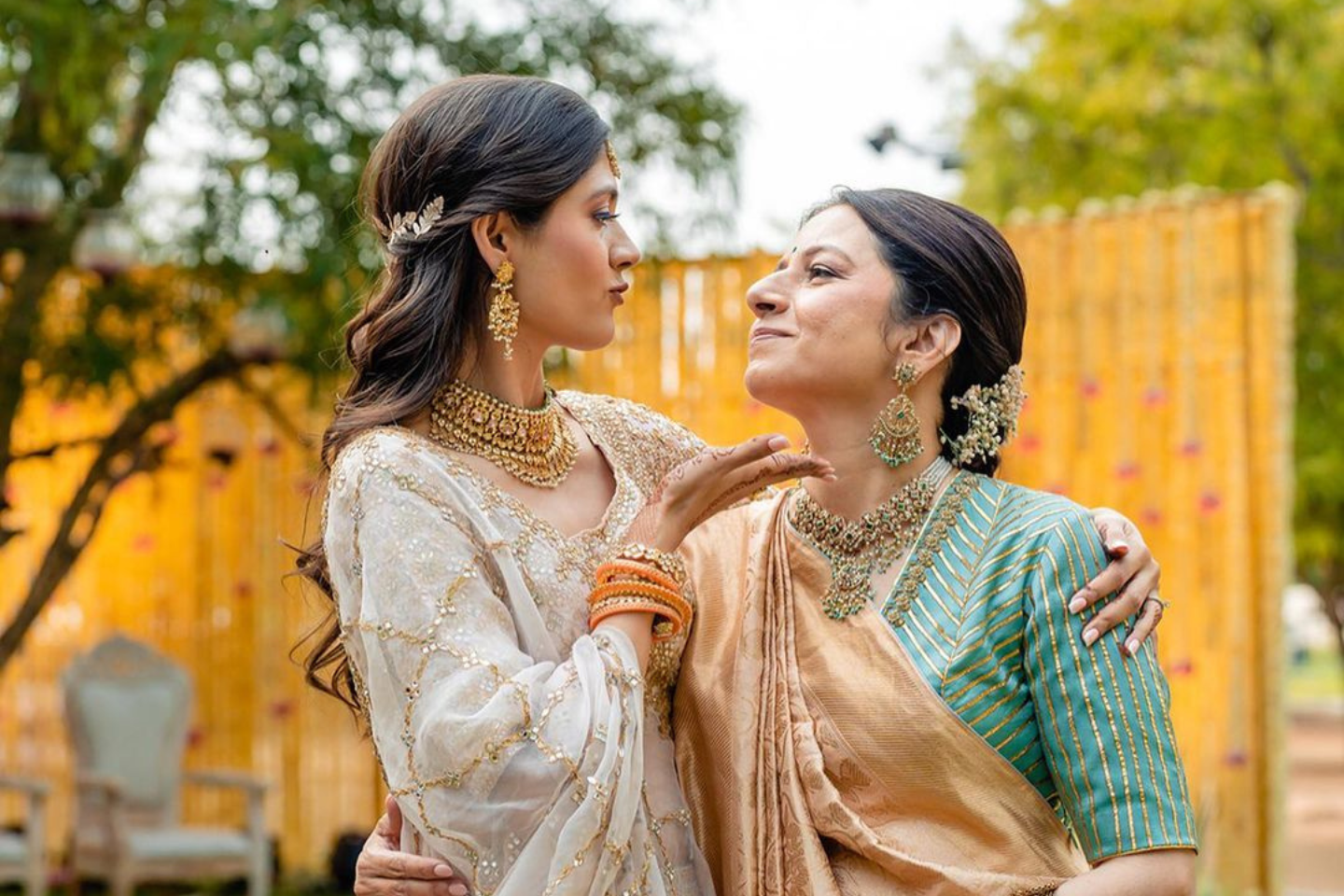Indian weddings are nothing less than a grand festival in their own right. They’re colorful; they’re lively; they bring everyone together; but most important of all, they’re a celebration of the Indian culture, the legacy, and the values that bring everyone together.
India, being home to the diverse range of cultures that it has, also has the good fortune of experiencing different kinds of festivities, rituals, (and food!) that the different Indian weddings bring with them. However, there is one particular ritual that is common throughout almost every Indian wedding—the phere.

The scene depicts the marriage of Krishna's parents, Vasudeva and Devaki, before the Vedic priest who performs the ceremony over the sacrificial fire. It is from a dispersed Bhagavata Purana manuscript of some three hundred folios recounting the exploits of Krishna.
Source and image courtesy: Victoria and Albert Museum
A phera is one of the most important rituals in an Indian wedding. It is the ritual of walking around the sacred fire, agni, or another sacred object or idol (the Guru Granth Sahib Ji in the case of Sikh weddings). Though the ritual is common in the wedding ceremonies of most Indic religions, the number of pheras varies.
The Saath Phere or Saptapadi

Image courtesy: Wikimedia Commons
Hindu Indian weddings have the ritual of saat phere, which involves circumambulating around the consecrated fire, agni, seven times and reciting a specific vow during each round. Vows made in the presence of the sacred fire are thought to be unbreakable. Every phera and the vow taken during it has a distinct meaning.
- During the first phera, the couple calls upon God for an abundance of nourishing and pure food, as well as a noble and respectful life.
- During the second phera, the couple prays to God for a flourishing and healthy life, along with physical, spiritual, and mental strength.
- During the third phera, the couple calls upon God for wealth and for strength, so that they can share their joy and sorrow.
- During the fourth phera, the couple prays to God for love, trust, and respect for each other and their respective families, and for continuous joy and peace.
- During the fifth phera, the couple prays for loving and virtuous children.
- During the sixth phera, the couple prays for a long and peaceful life with each other.
- During the seventh phera, the couple calls upon God for companionship, fealty, and understanding. They pray to God to make them friends and to give them the maturity to carry out their friendship for the rest of their lives. After the Seven Vows/saat phere, the couple is said to have become friends and that they won't break their friendship for life.
The saat phere are sometimes referred to as the Saptapadi, which is the ritual of taking seven steps, around the consecrated entity. In other Indian weddings, the couple takes seven steps to complete one round.
Other Indian weddings, such as the Marwari wedding, the Telugu Wedding, and the Maharashtrian wedding also have the ritual of saat phere. A Bengali wedding sometimes has seven pheras, sometimes three, or sometimes it is solemnized without the pheras.
The ‘Chaar’ Phere

Image courtesy: Wikimedia Commons
In certain Indian weddings, instead of circumambulating the consecrated fire seven times, they do so four times. Sikh weddings, Gujarati weddings, Sindhi weddings, and Rajasthani weddings to name a few, have four pheras.
In Sikh weddings, called the Anand Karaj, the pheras are known as laavan, and the couple circumambulates the Guru Granth Sahib, the holy book of Sikhs, regarded by them as their final and eternal Guru. The four laavan are a part of the text of the Guru Granth Sahib in the form of hymns. Guru Ram Das Ji, the Fourth Guru, composed the Laavan Shabad.
When the ritual takes place, the hymns are sung, while the couple walks around the Guru Granth Sahib.
- The first laav depicts the new couple's daily obligations. The Guru instructs them to abstain from sin and to entrust their virtue, morality, and integrity to one another.
- In the second laav, the Guru asks them to let go of their egos and feel his presence all around them.
- The third laav emphasizes the importance of ‘Sadh Sangat’ (people worshiping together in a sacred place), which only the blessed can obtain.
- The fourth laav greets them to their new life. The newlywed couple is blessed so that their souls can merge with the almighty.



































